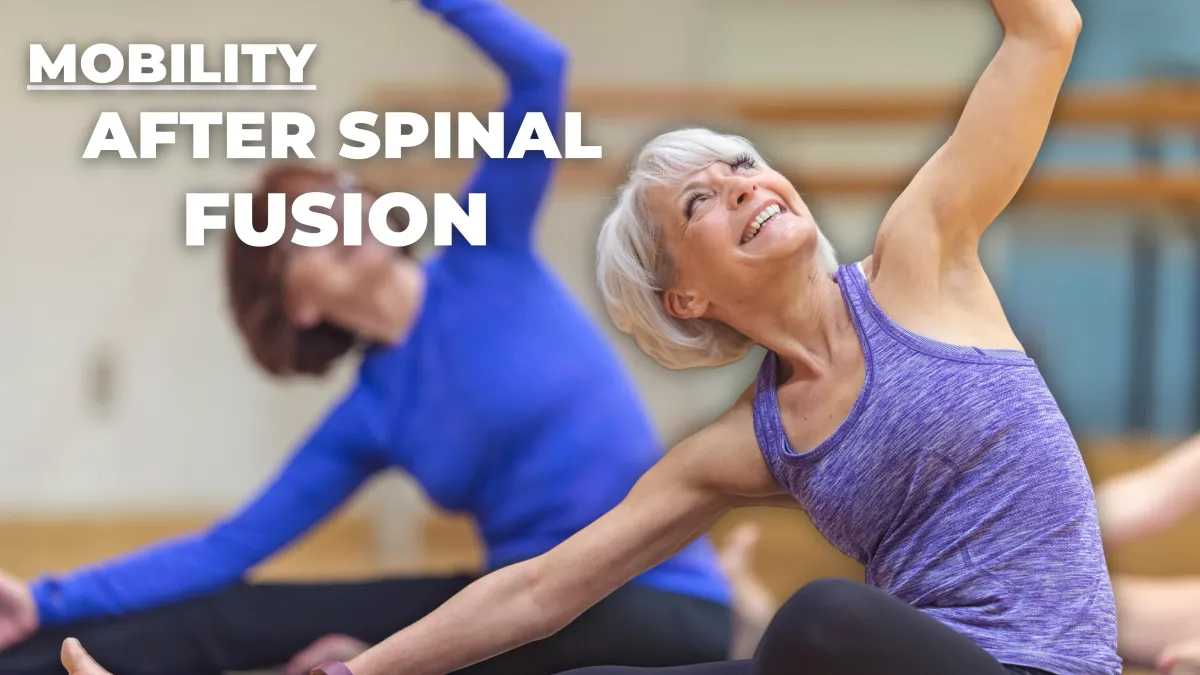
Mobility After Spinal Fusion: What’s Possible and What to Know
Mobility After Spinal Fusion: What’s Possible and What to Know
By Ed Paget, Osteopath & Creator of the Scoliosis Correction Protocol

Even though I specialize in helping people manage scoliosis with specific exercises I understand that spinal fusion is often a necessary step in managing severe scoliosis. While it can offer stability and prevent progression of the curve, it naturally brings questions about long-term mobility, flexibility, and what types of movement are safe afterward.
I get almost daily inquires from people who have had a spinal fusion operation wondering what they can do to decrease pain or improve their curves.
Whether you’ve recently undergone spinal fusion or are supporting someone who has, it’s important to know that mobility doesn’t have to stop. It just needs to evolve—with care, intention, and the right guidance.
When I work with people who are post-fusion I help them reconnect with their bodies safely and mindfully. I usually create bespoke exercises as everyone’s situation is a little different and I’ve found that generic exercises don’t usually work that well.
Have a listen to what Alenka says about working with us.
https://youtu.be/CxC5Yv_cRzE
Understanding What Changes After Spinal Fusion
Spinal fusion involves joining two or more vertebrae to reduce motion in that area of the spine. This means that while the fused section loses flexibility, the rest of the body still moves—often in ways that can either support or strain the non-fused joints in the spine, depending on posture and movement habits.
Mobility after fusion is absolutely possible, but it requires adapting movement to respect the body’s new structure. That’s why personalized, well-informed routines matter.
Key Principles for Post-Fusion Mobility
1. Prioritize Functional Movement
Post-fusion, the focus shifts toward movements that support daily activities—like reaching, bending safely, walking, and sitting with ease. The emphasis on functional mobility can help build confidence and reduce discomfort in everyday life.
Like this quick and easy way to get up from the floor that if done repeatedly becomes a great work out. See how many you can do in 30seconds, (my record is about 8)
https://www.instagram.com/reel/DJ6-sywplbc/?utm_source=ig_web_copy_link&igsh=MzRlODBiNWFlZA==
2. Gentle Stretching Is Still Valuable
Although fused sections don’t bend, muscles and fascia around them can become tight or overworked. Controlled stretching can improve comfort and promote better movement in non-fused areas, especially in the hips, shoulders, and thoracic spine.
Movements from a group out of Europe called Spiral Stabilization can be very useful here: https://www.spiralstabilization.com/
3. Strengthen Without Stressing the Spine
Postural muscles need attention more than ever. Core engagement, pelvic alignment, and shoulder stability are key. Finding movements that incorporate low-impact exercises that strengthen supporting muscles while avoiding high-load or twisting movements that could stress the fusion site. I always put special emphasis on the hips.
To get the big butt muscles to help out as much as possible.
Try this: https://www.instagram.com/reel/DKH2sGshncr/?utm_source=ig_web_copy_link&igsh=MzRlODBiNWFlZA==
4. Avoid Overcompensation
When part of the spine can’t move, the rest may try to "make up" for it. Over time, this can create imbalances, discomfort or worse create early arthritis in joints above or below the fusion. A well-balanced movement plan that looks at the whole body and avoids overloading the joints like the hips, neck, or lower back is the way forward here.
5. Focus on Awareness and Breath
Mobility isn’t just about muscles and joints—it’s about awareness. Post-fusion, breathing techniques and body awareness play a big role in movement quality. Breathing can aid in core control, reduce tension, and make movement more fluid.
I really like the Wim Hof Method of breathing for this.
How the Scoliosis Correction Protocol Supports Mobility After Fusion
The protocol is designed to be adaptable. It meets individuals where they are—whether newly post-op or years into recovery. It includes:
Movement modules tailored to spinal support and symmetry
Breath work to improve alignment and reduce tension
Mindful mobility practices to promote flexibility without compromising the fusion site
A gradual, progressive structure that allows users to build confidence over time
Mobility doesn’t end after spinal fusion—it simply becomes more intentional. With the right tools, support, and guidance, it’s possible to move better, feel stronger, and live with greater ease.
Me and my team can help create a thoughtful way forward for you and your body. It’s not about pushing the limits—it’s about redefining what movement can feel like, even with a fused spine.
Book a call with us by clicking the link below to see how we can help you.
Let’s find the right solution together– schedule your call here